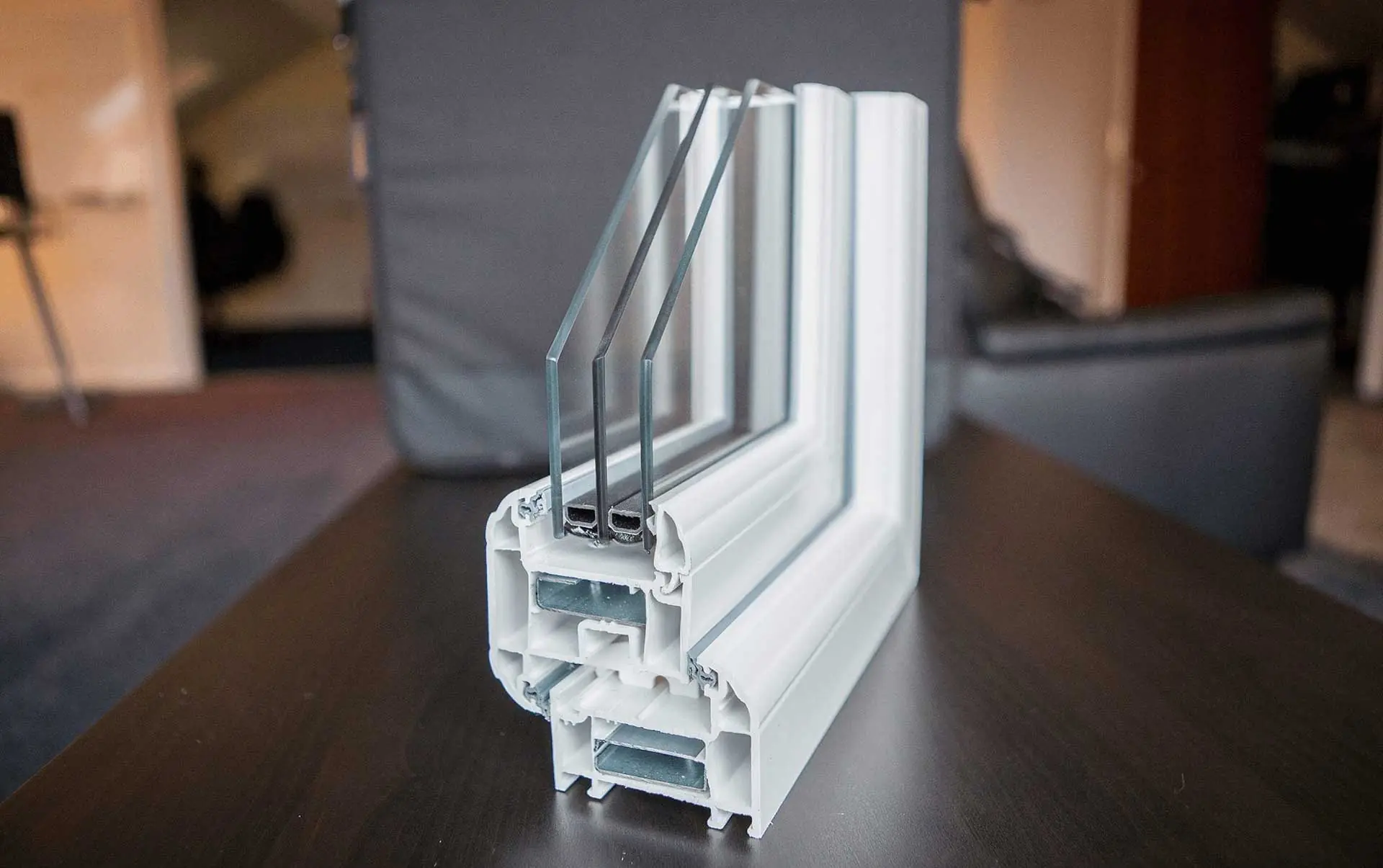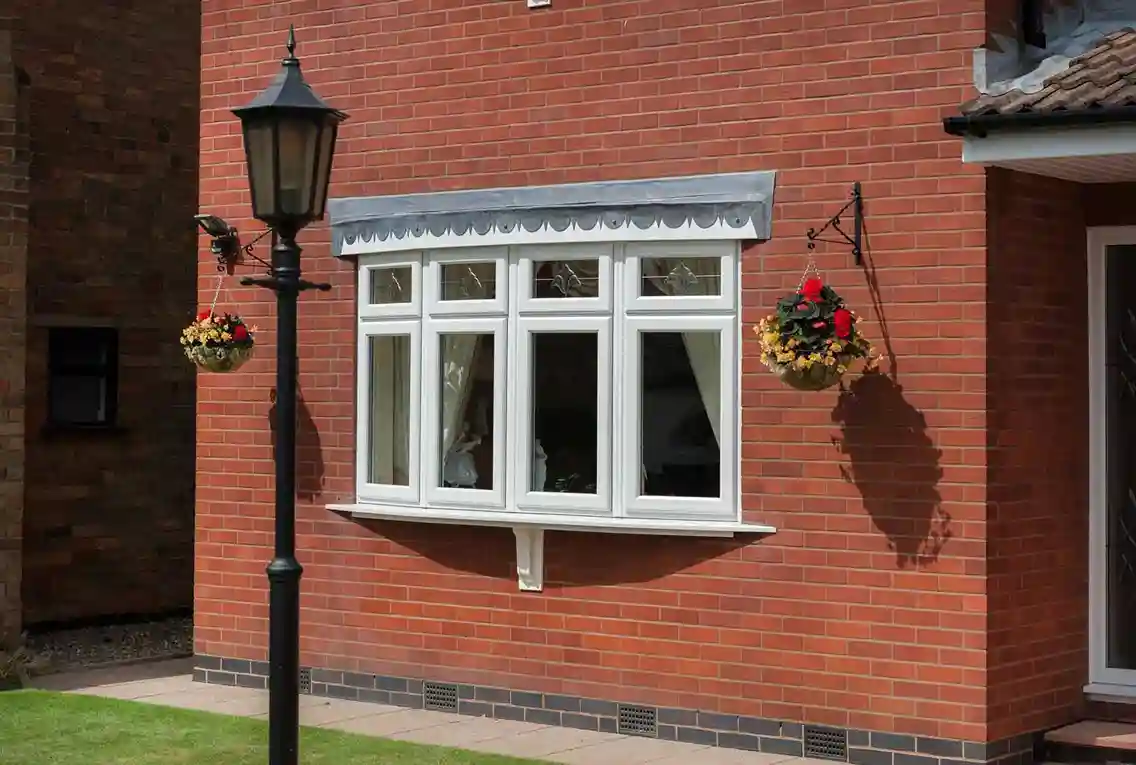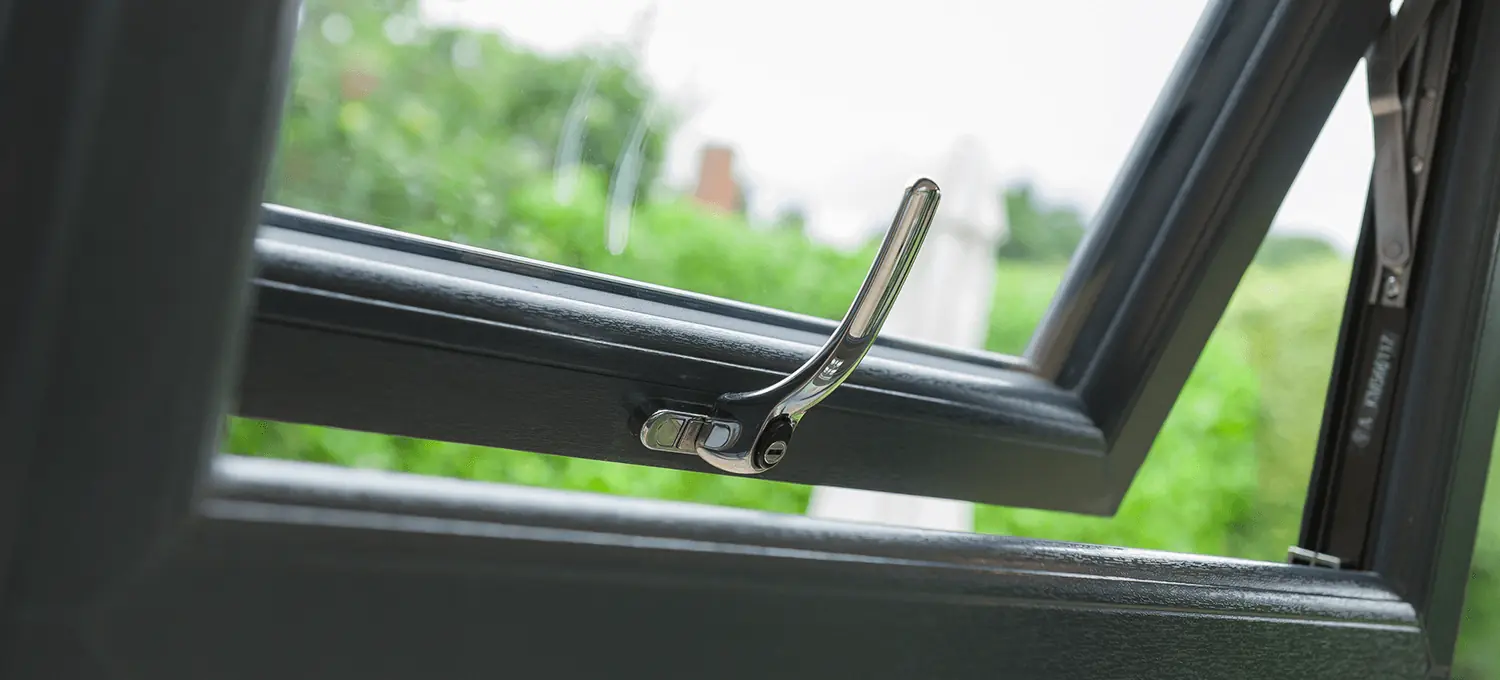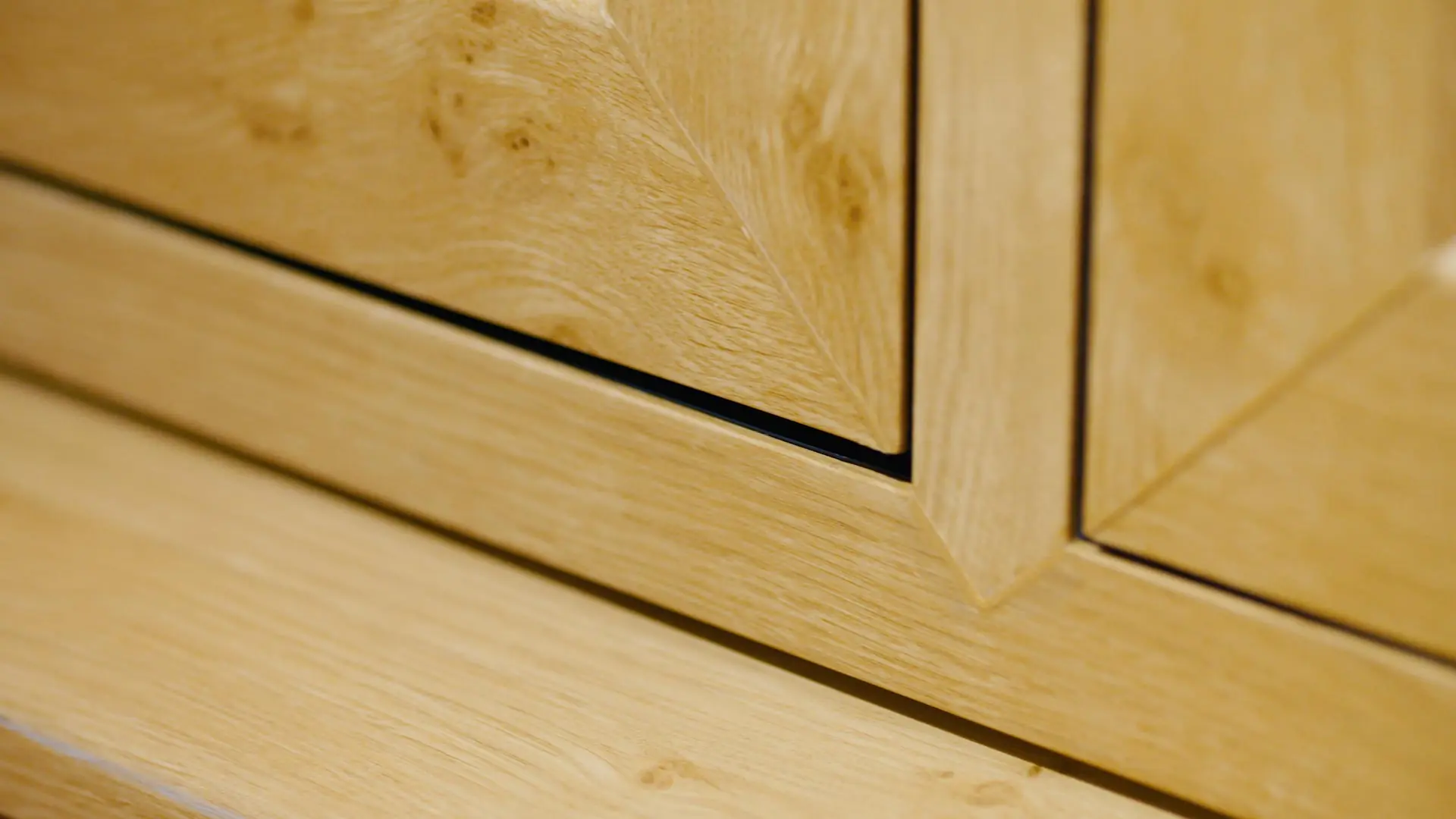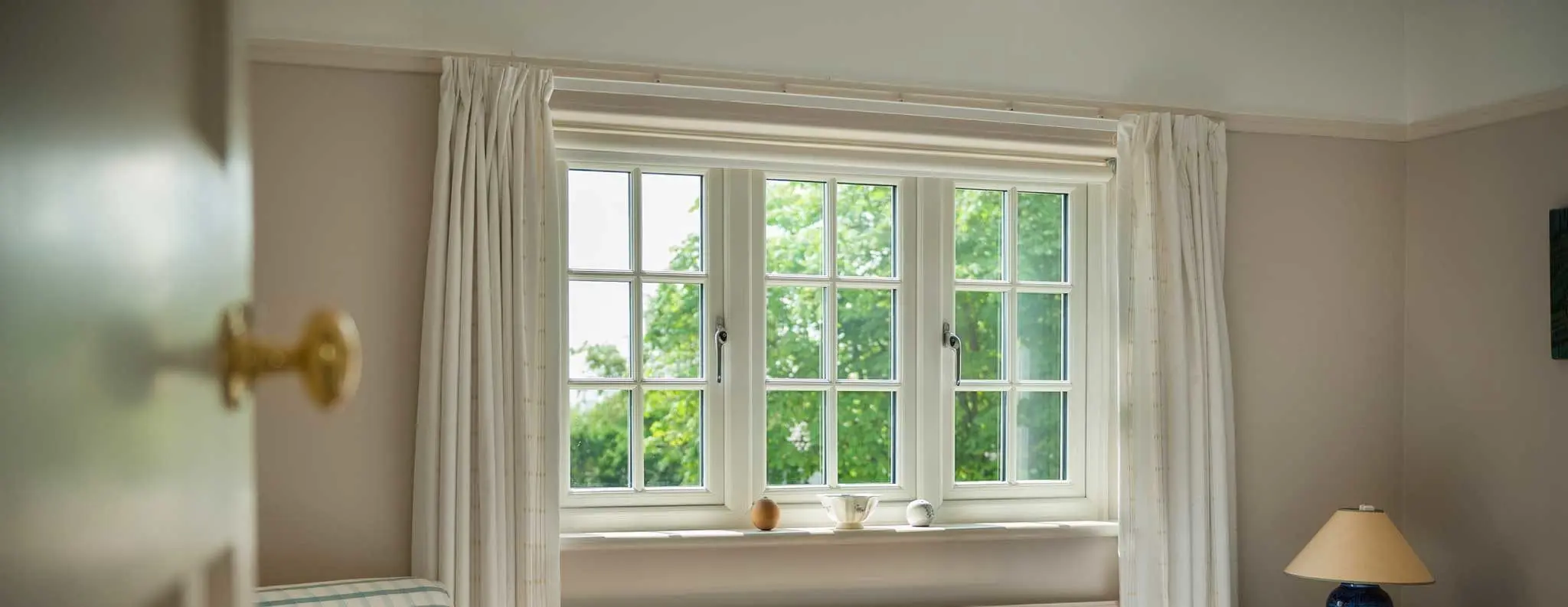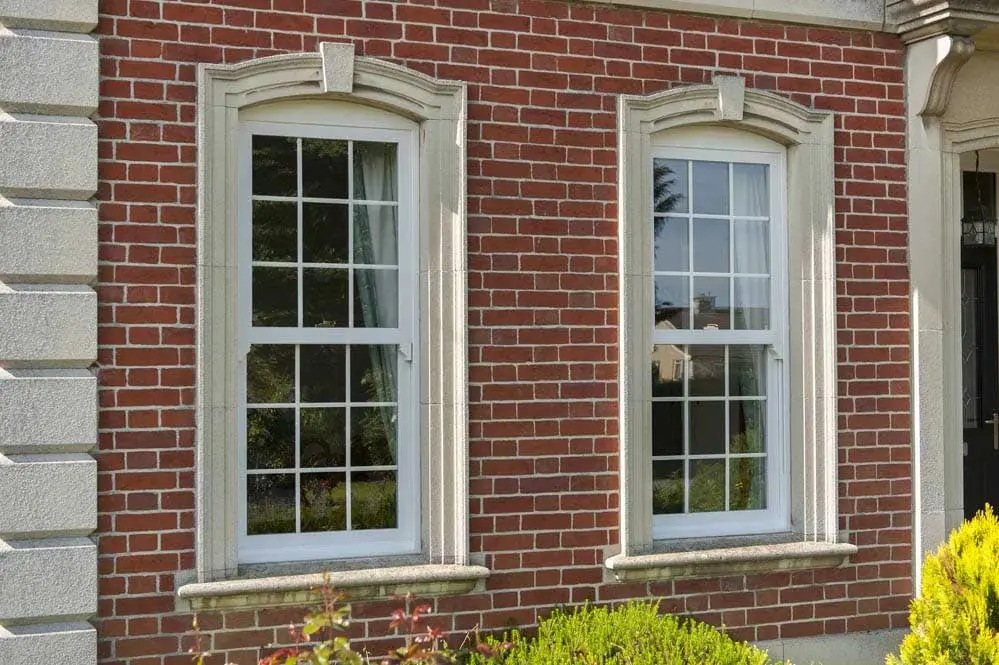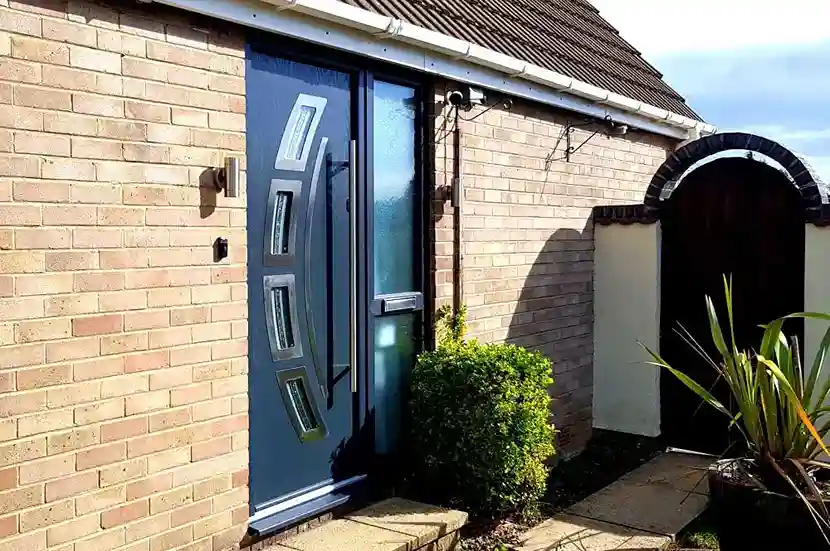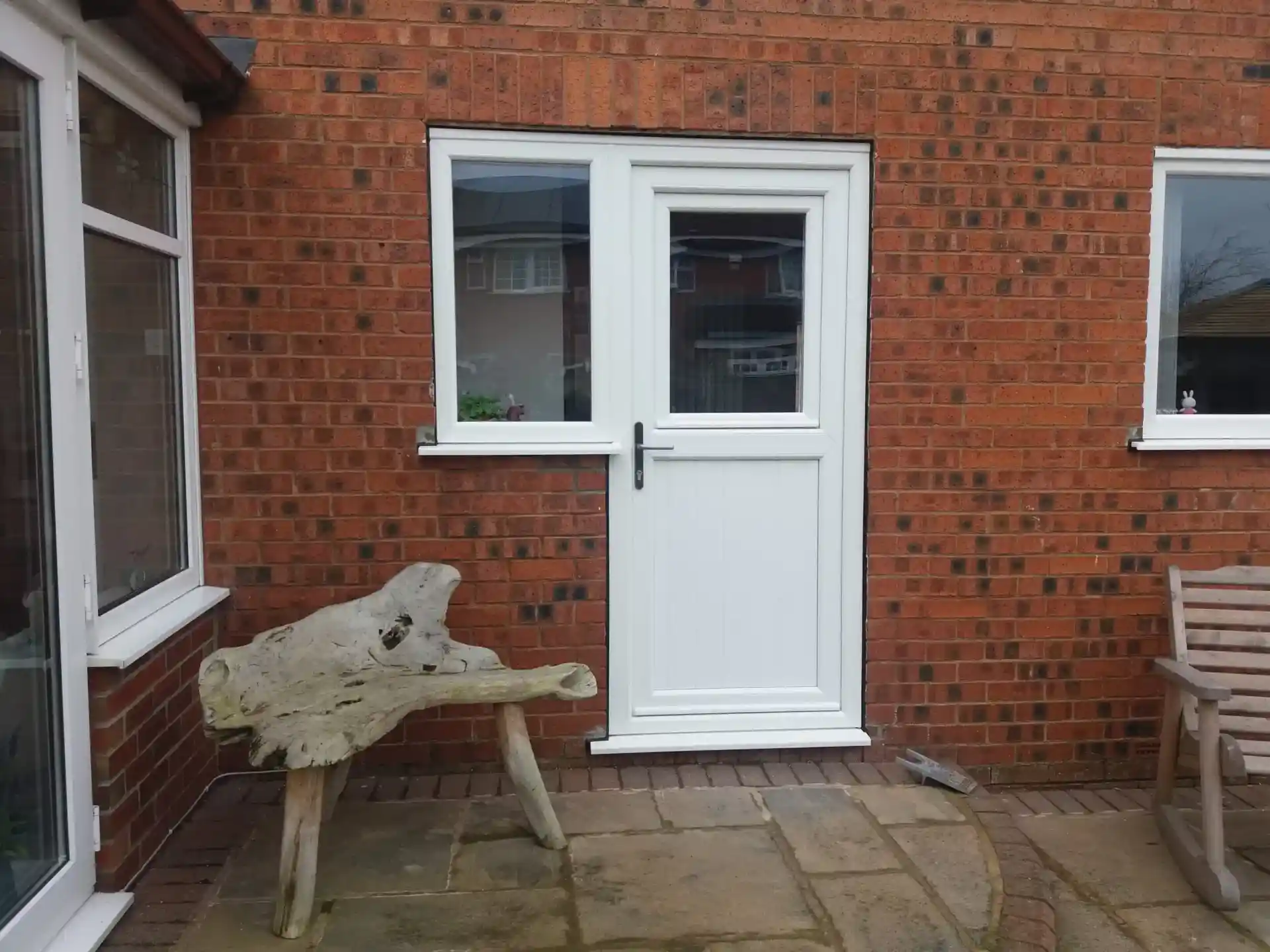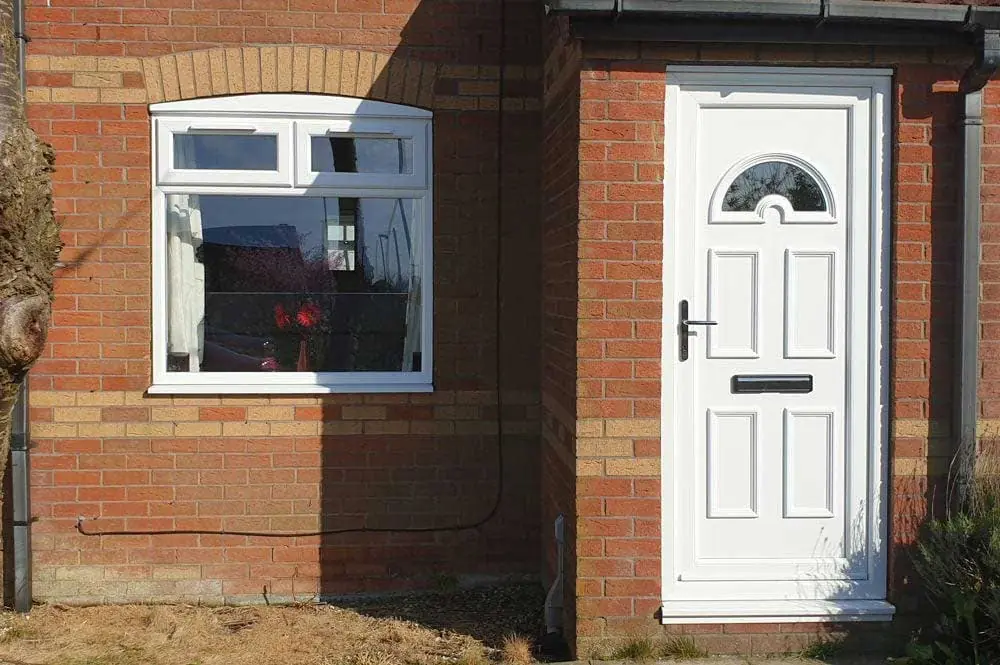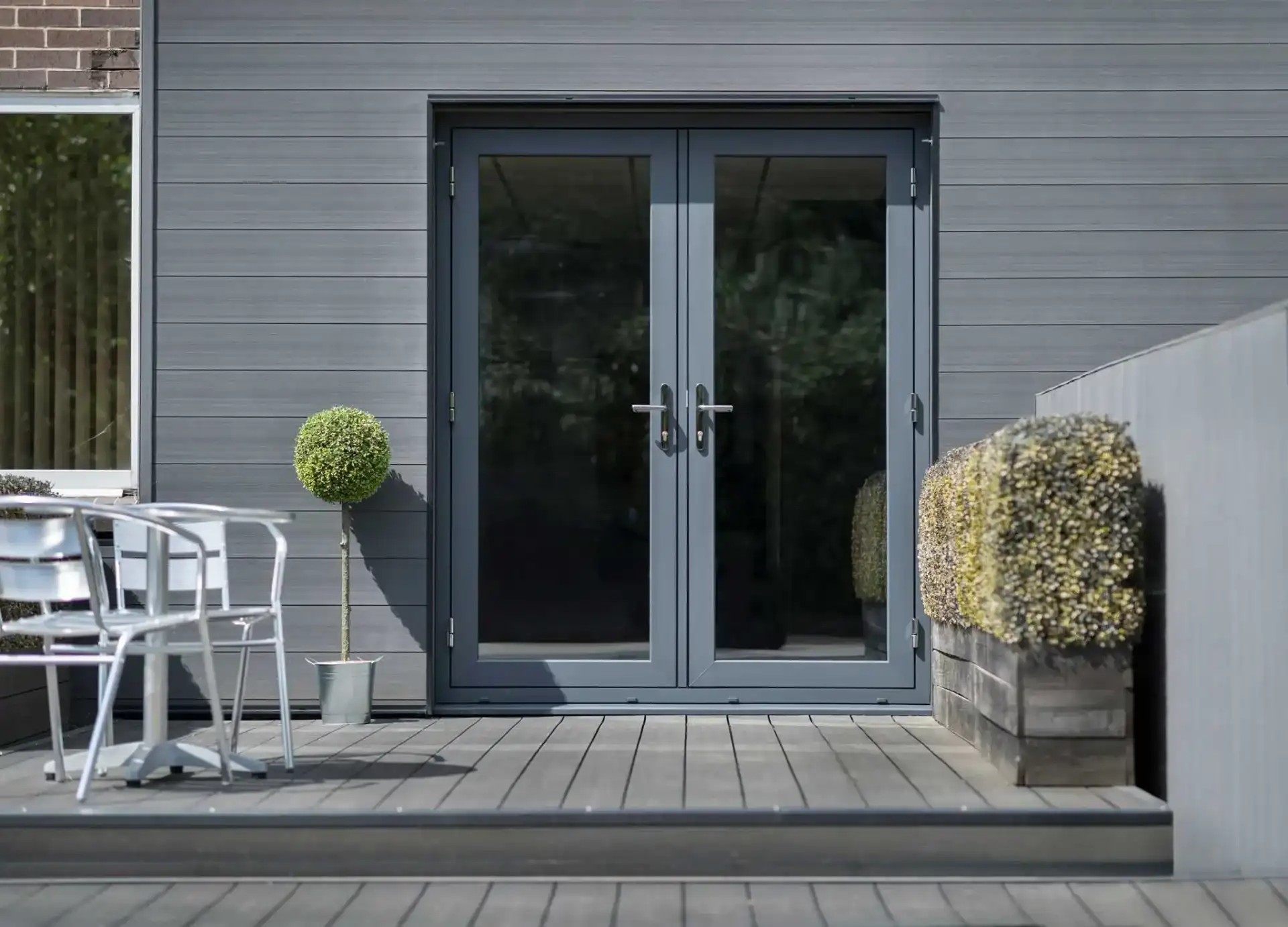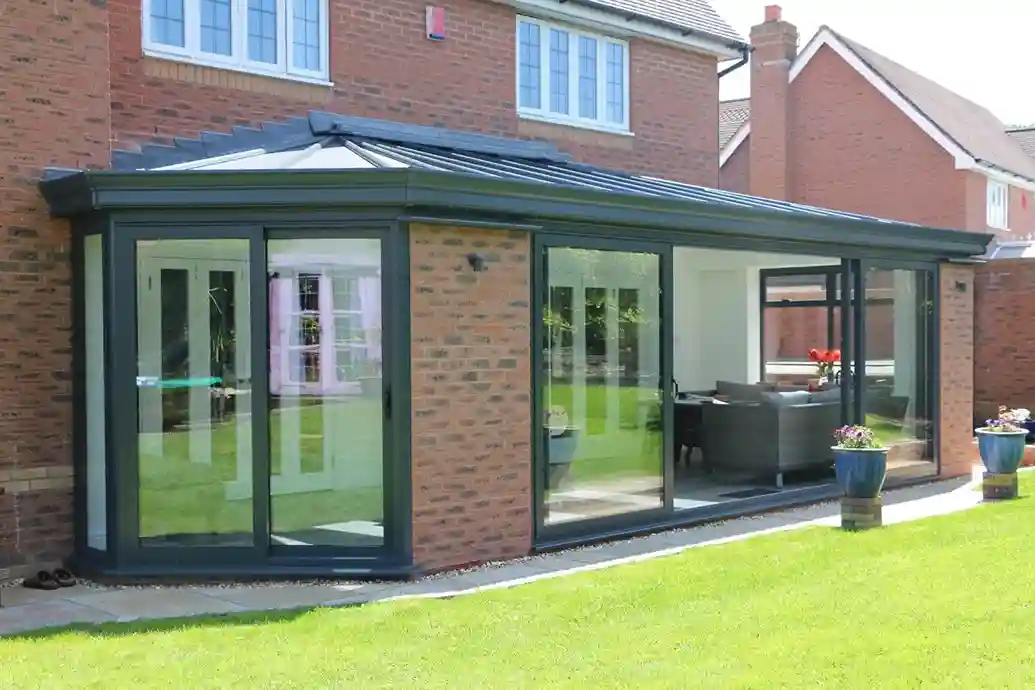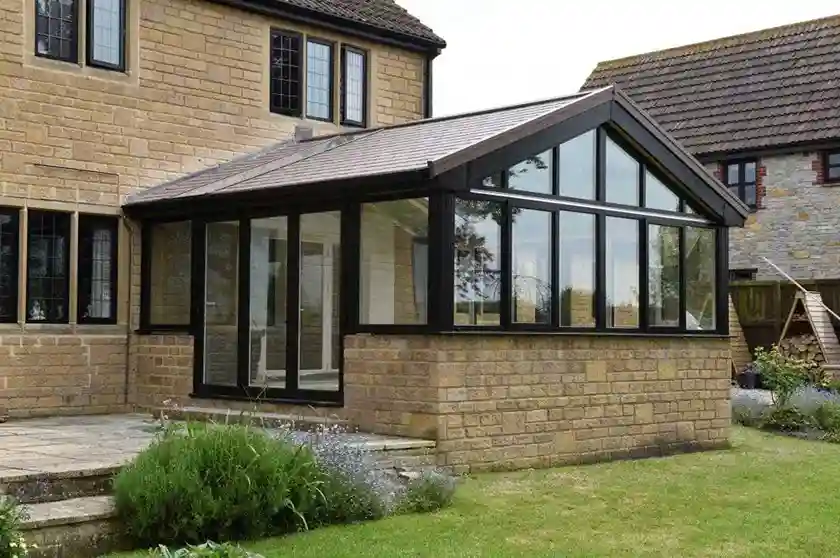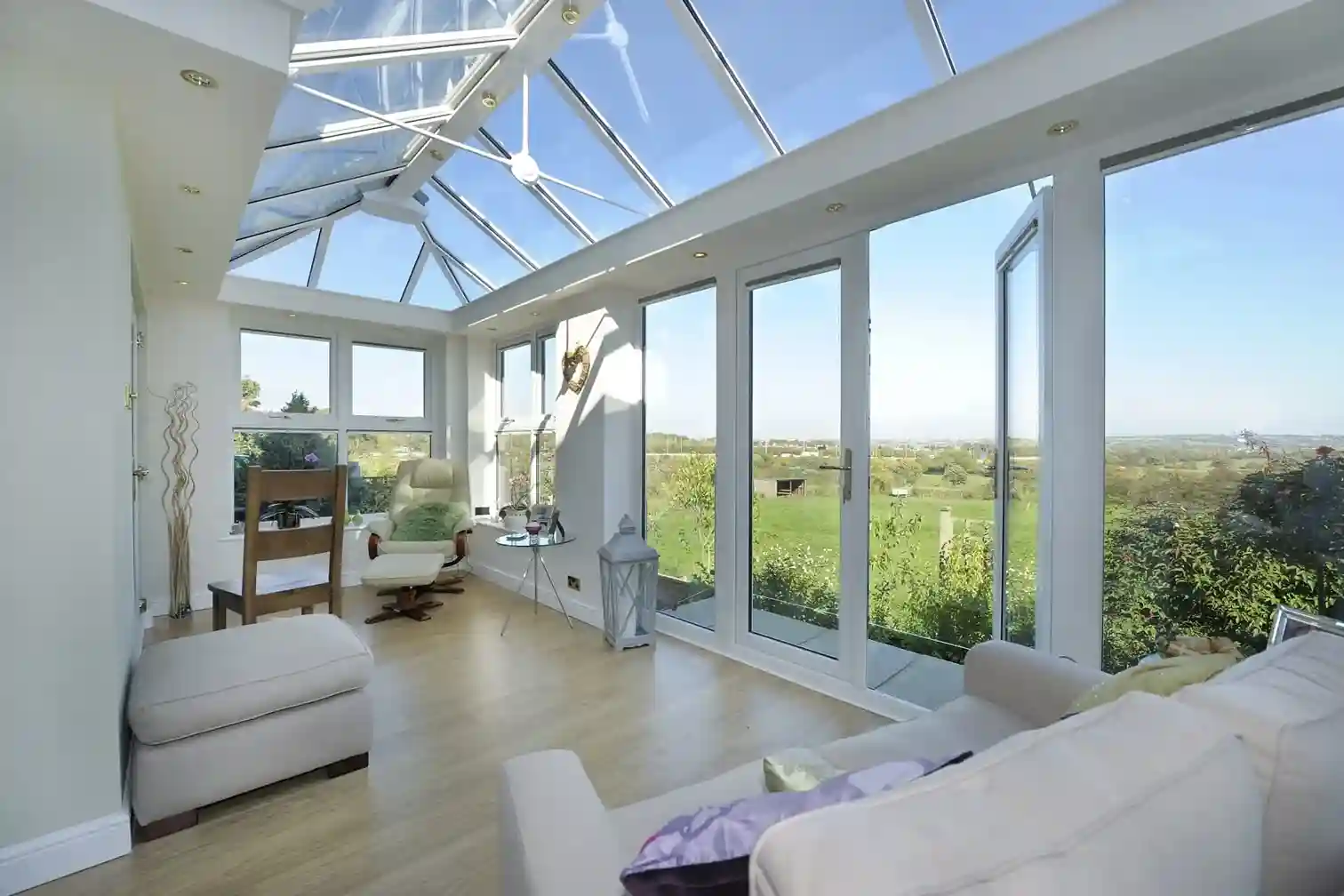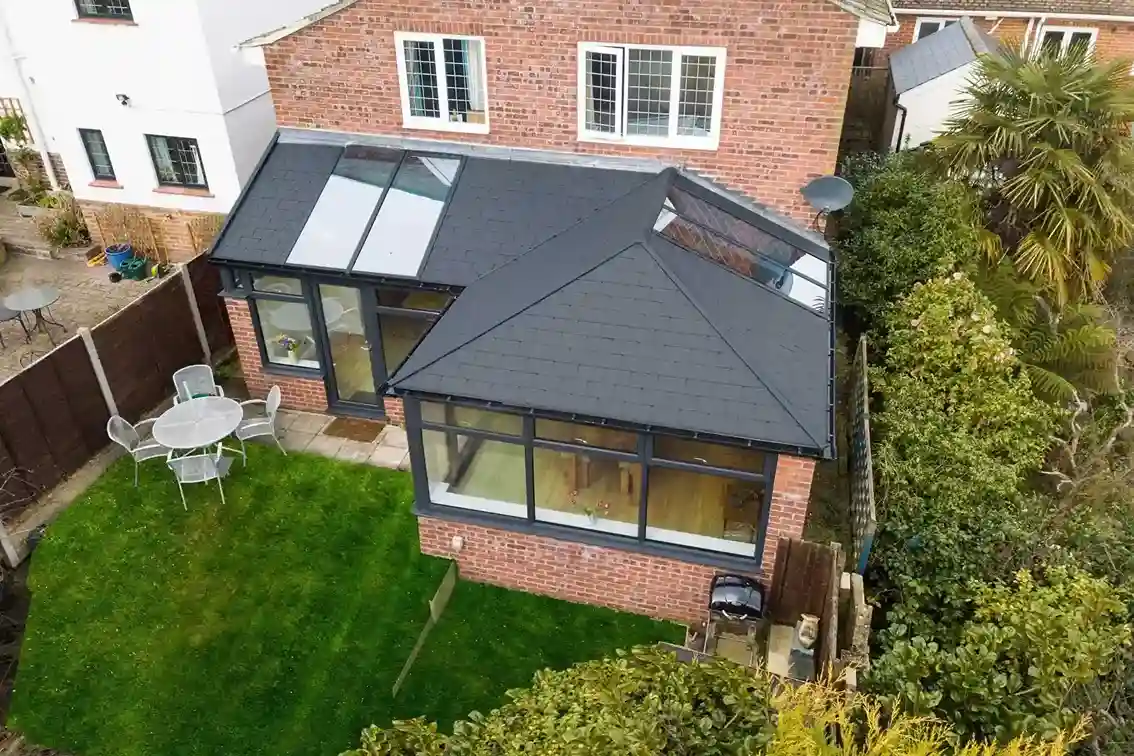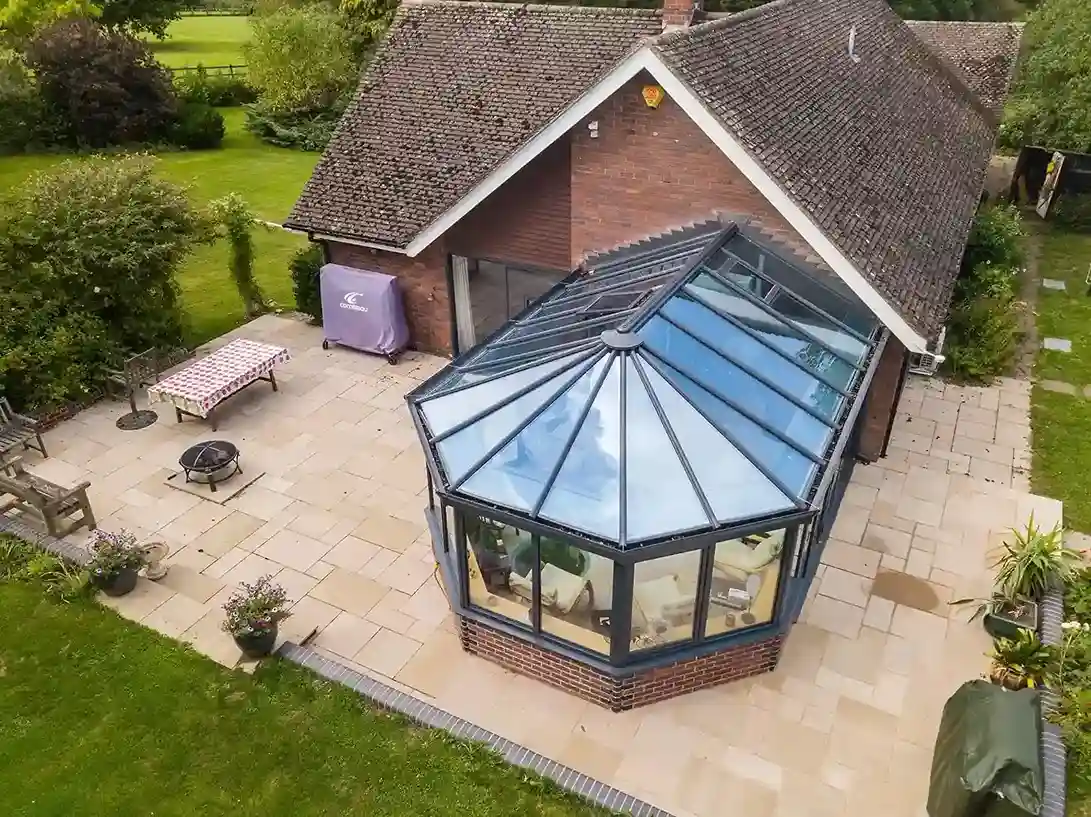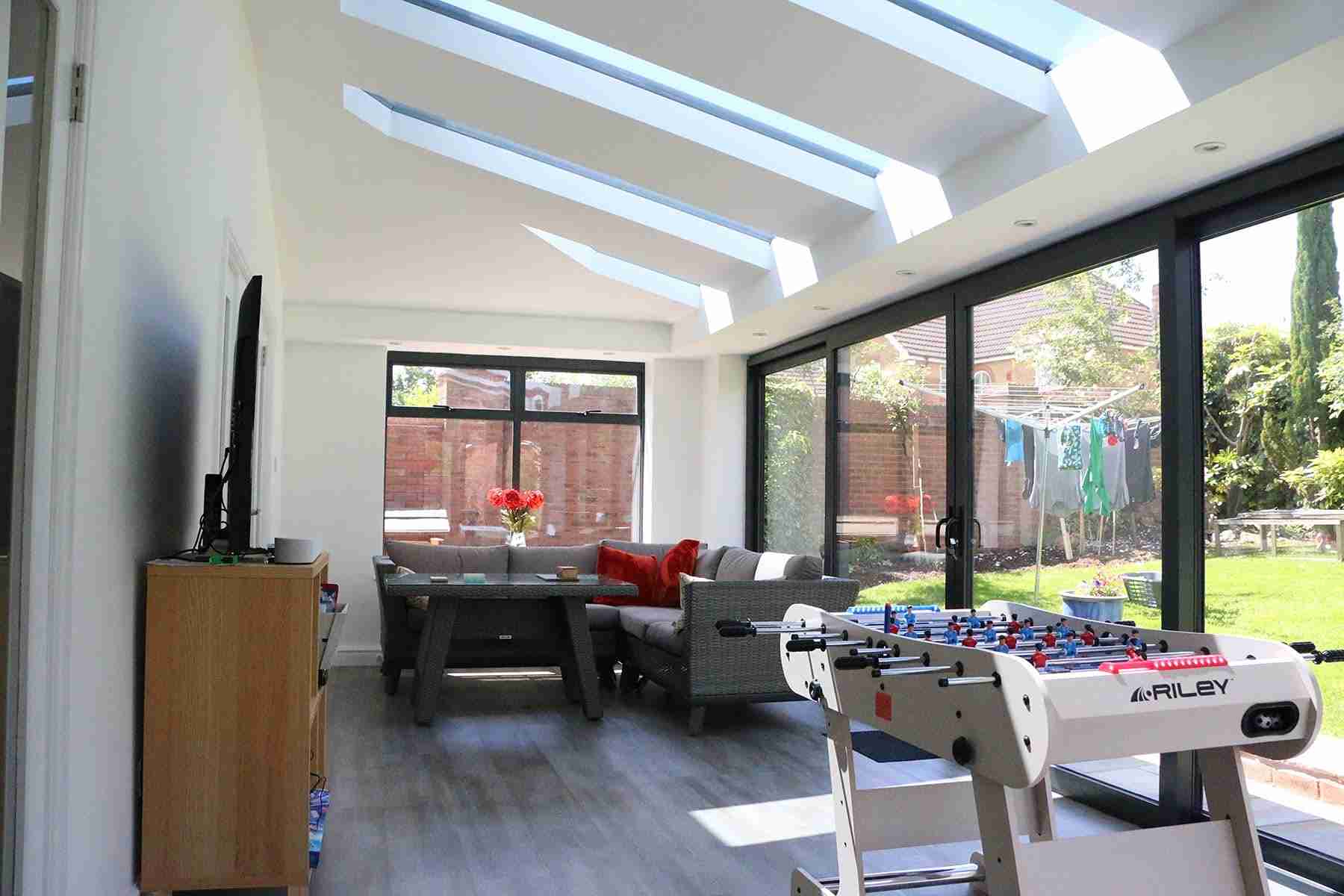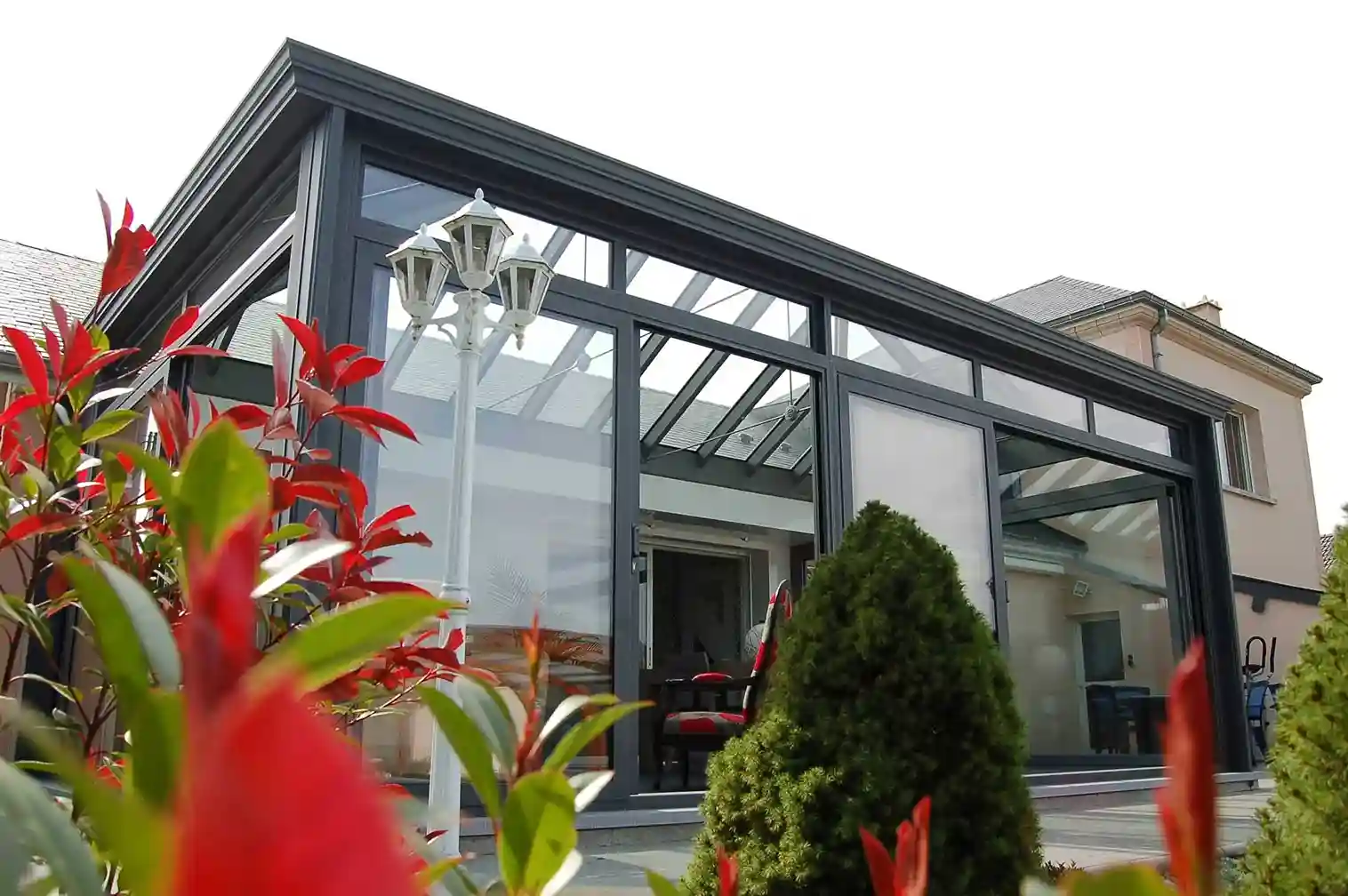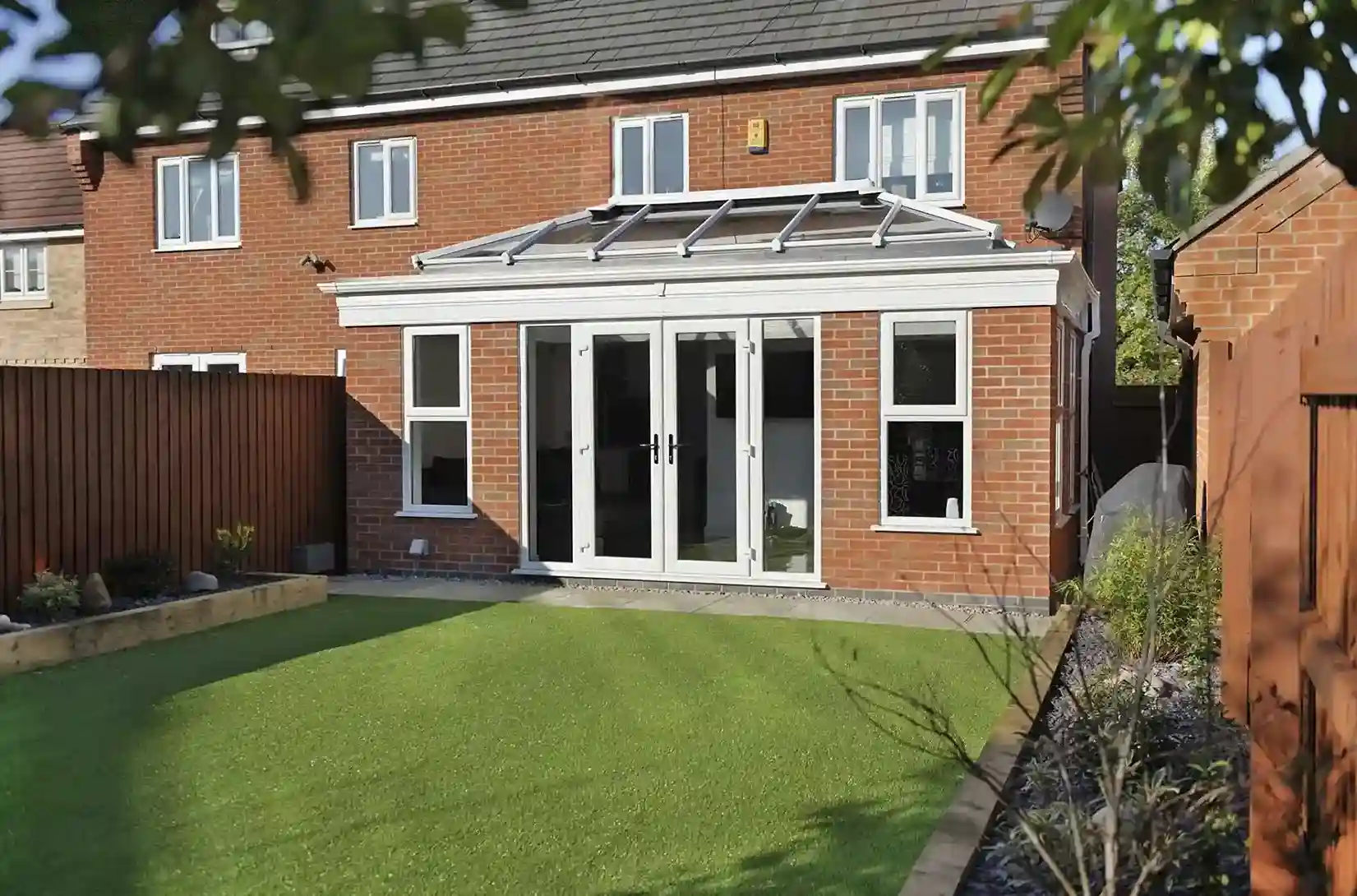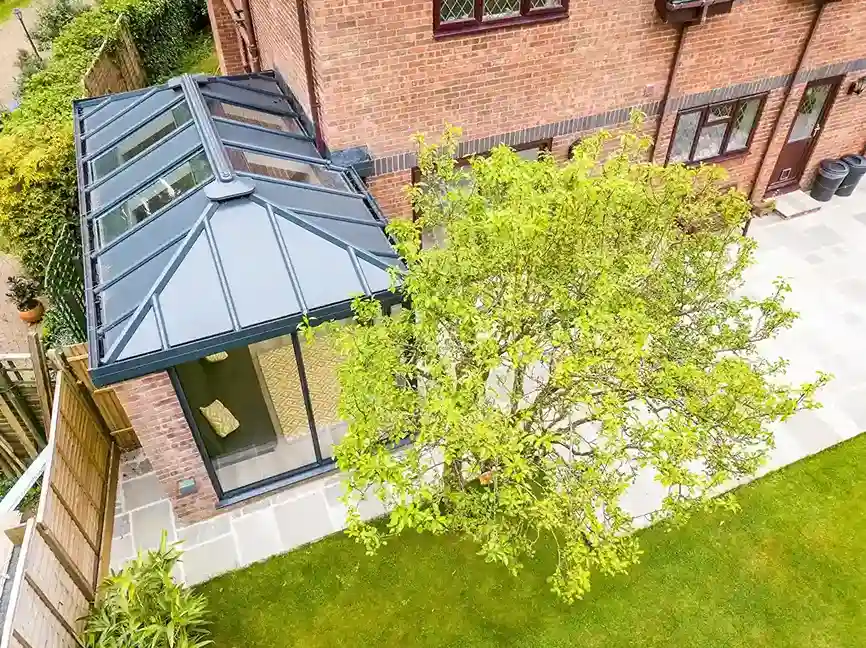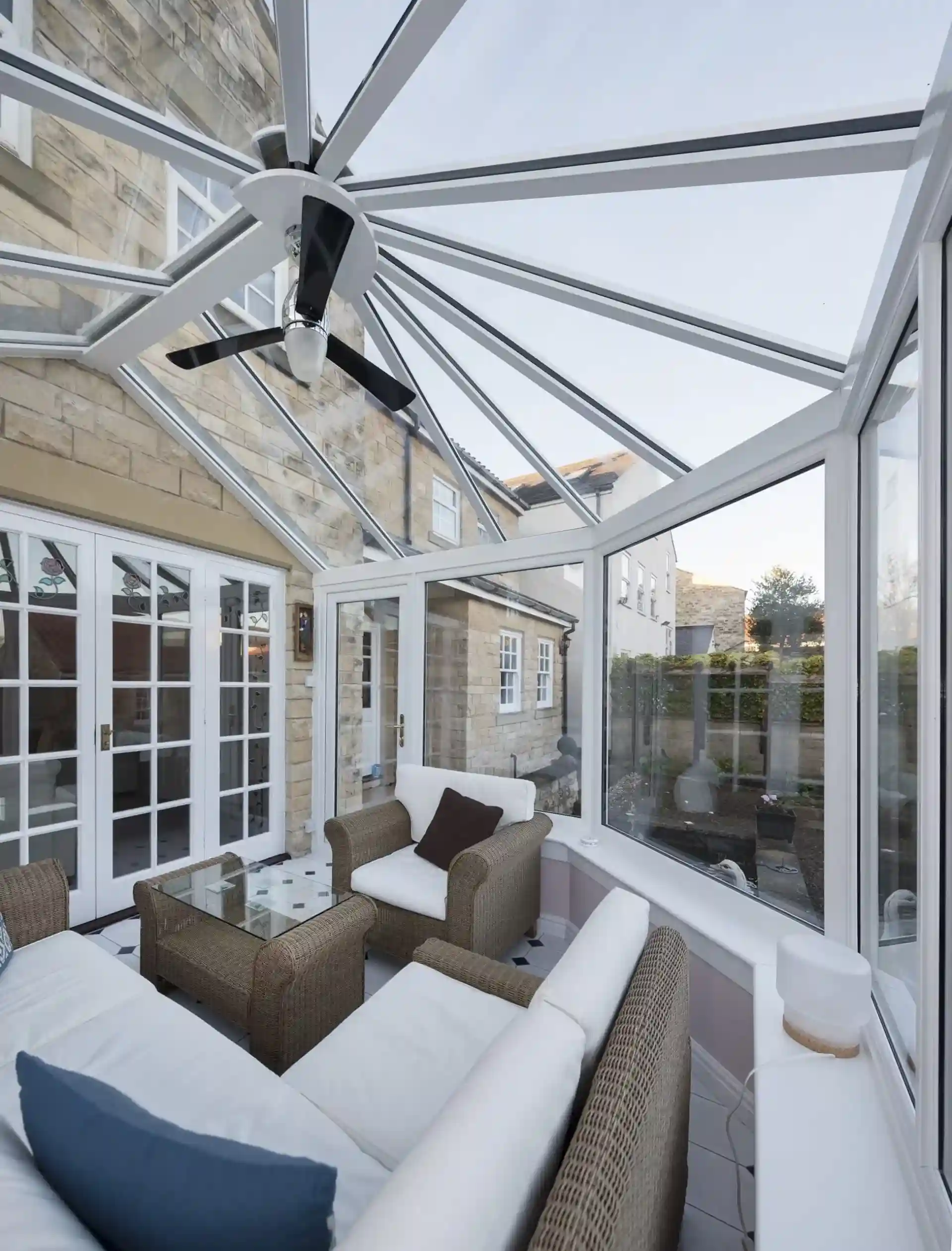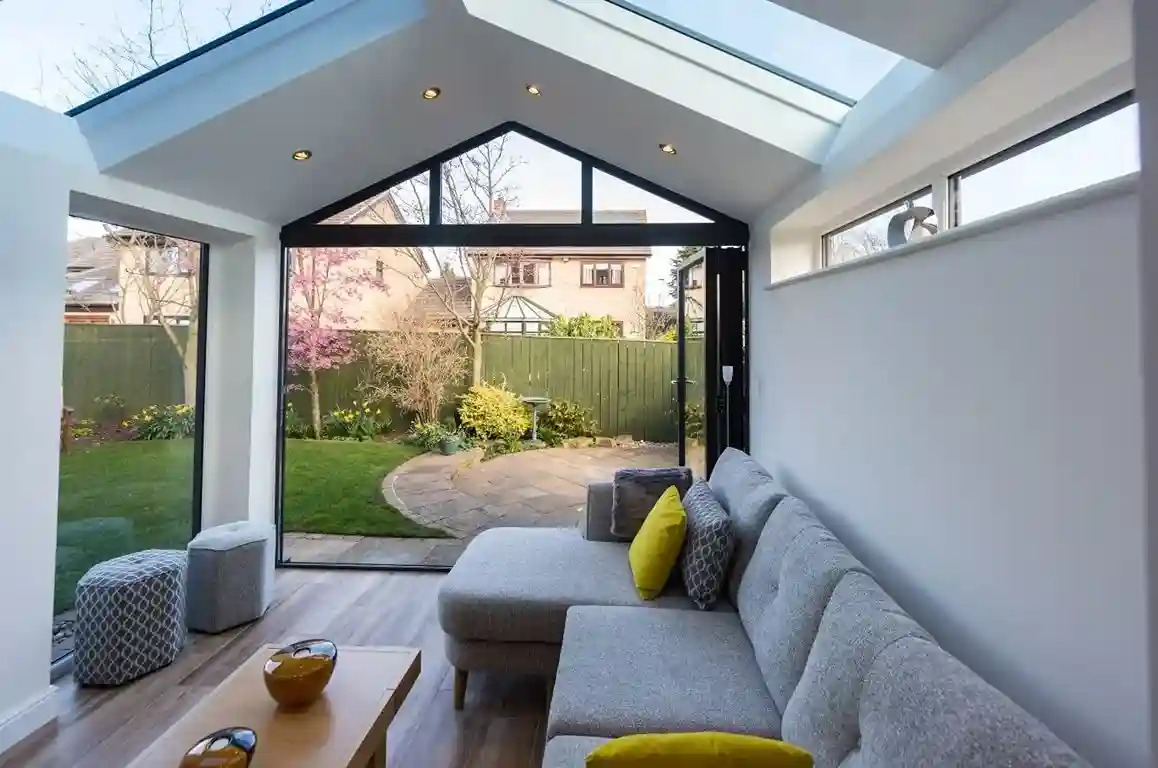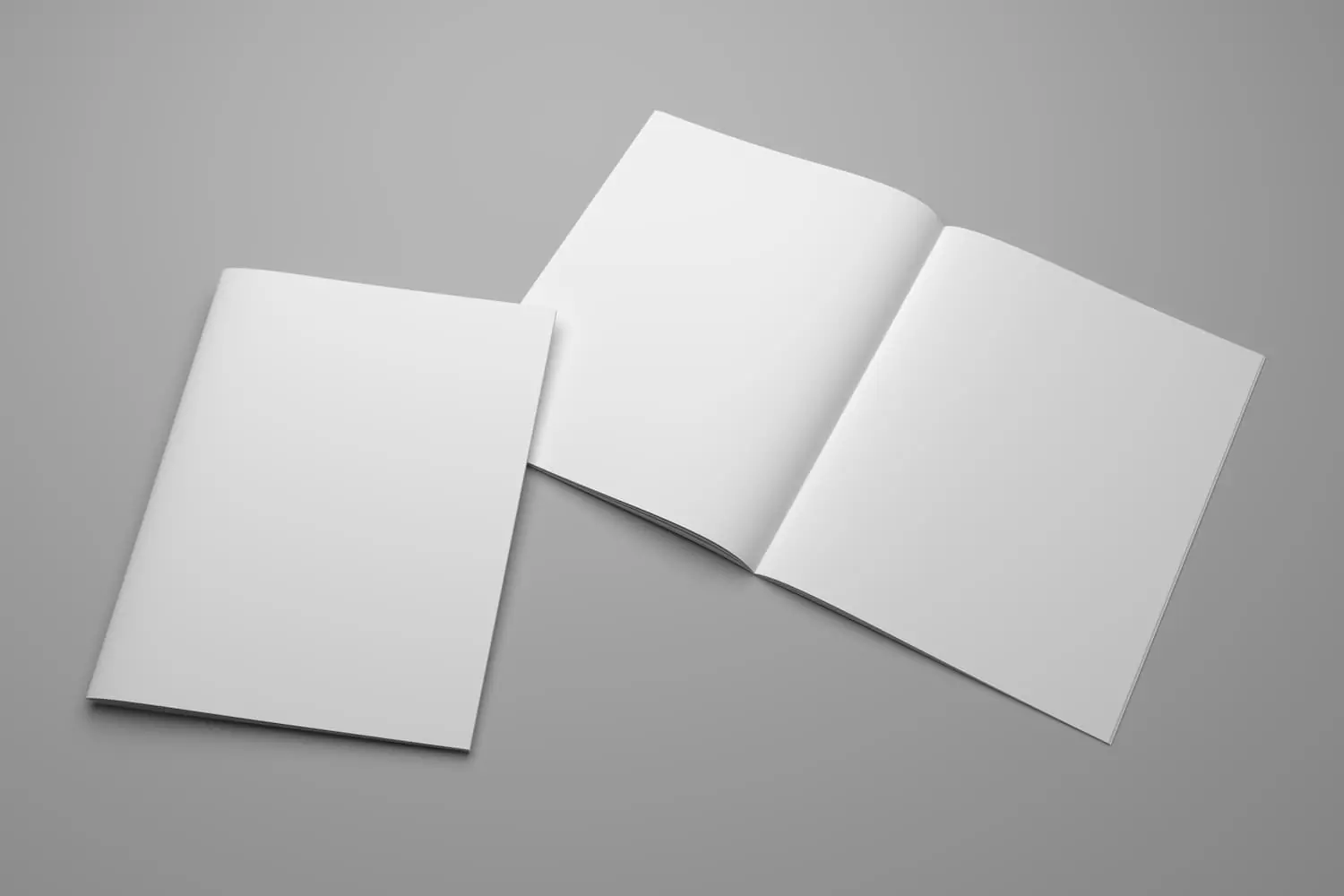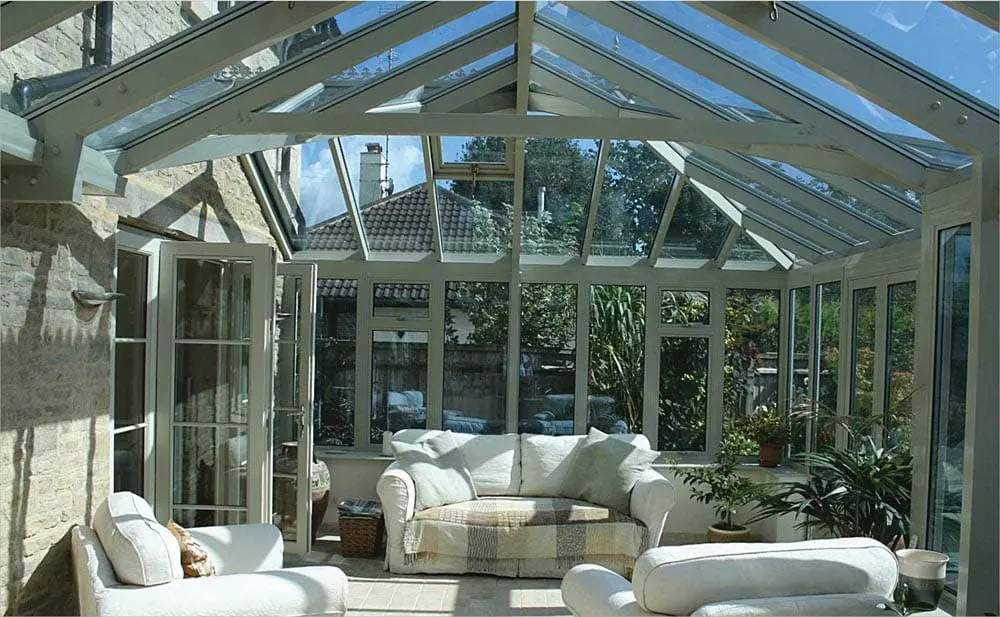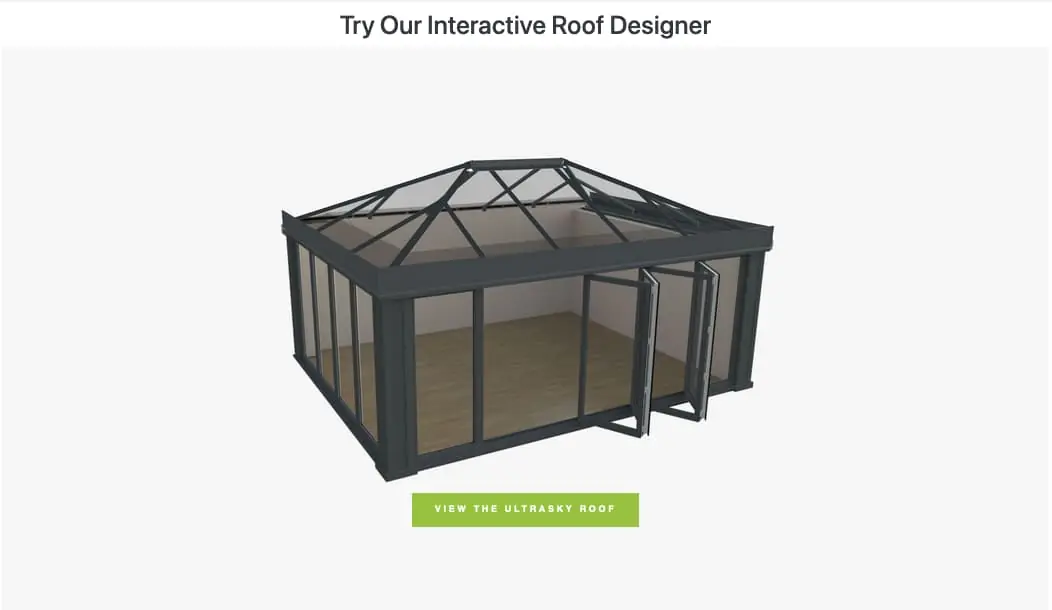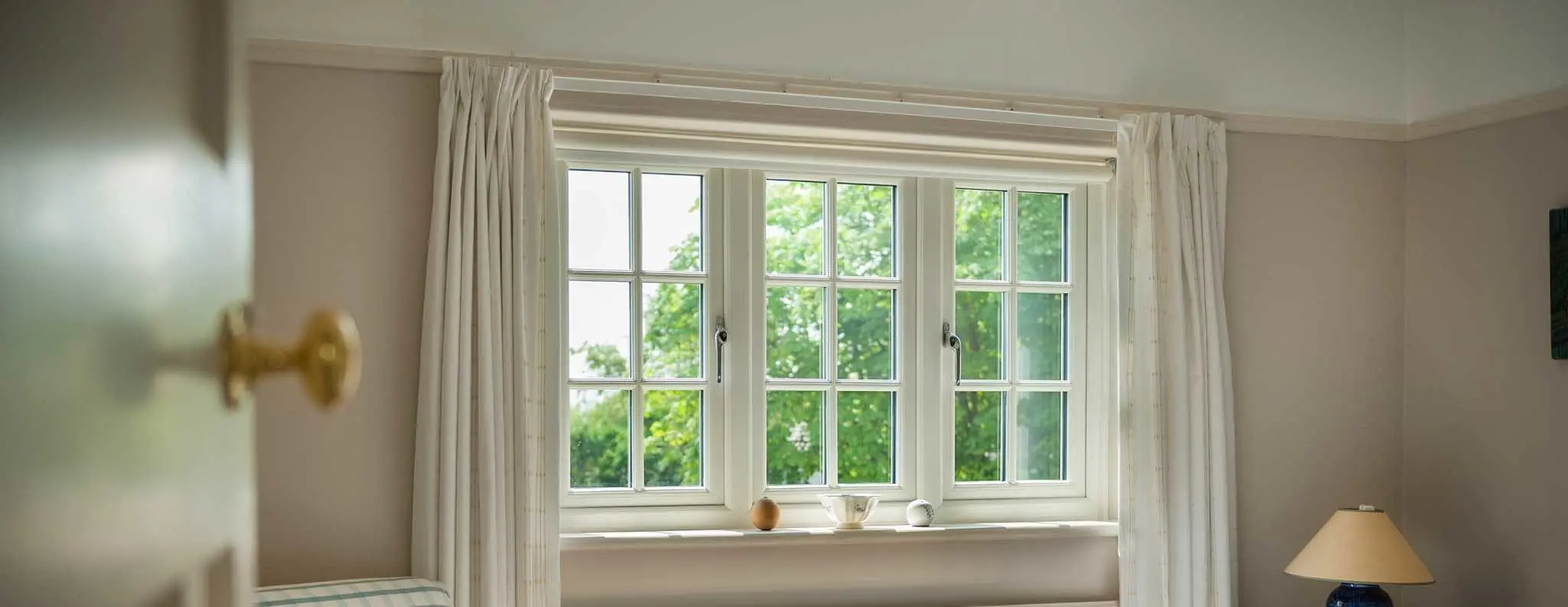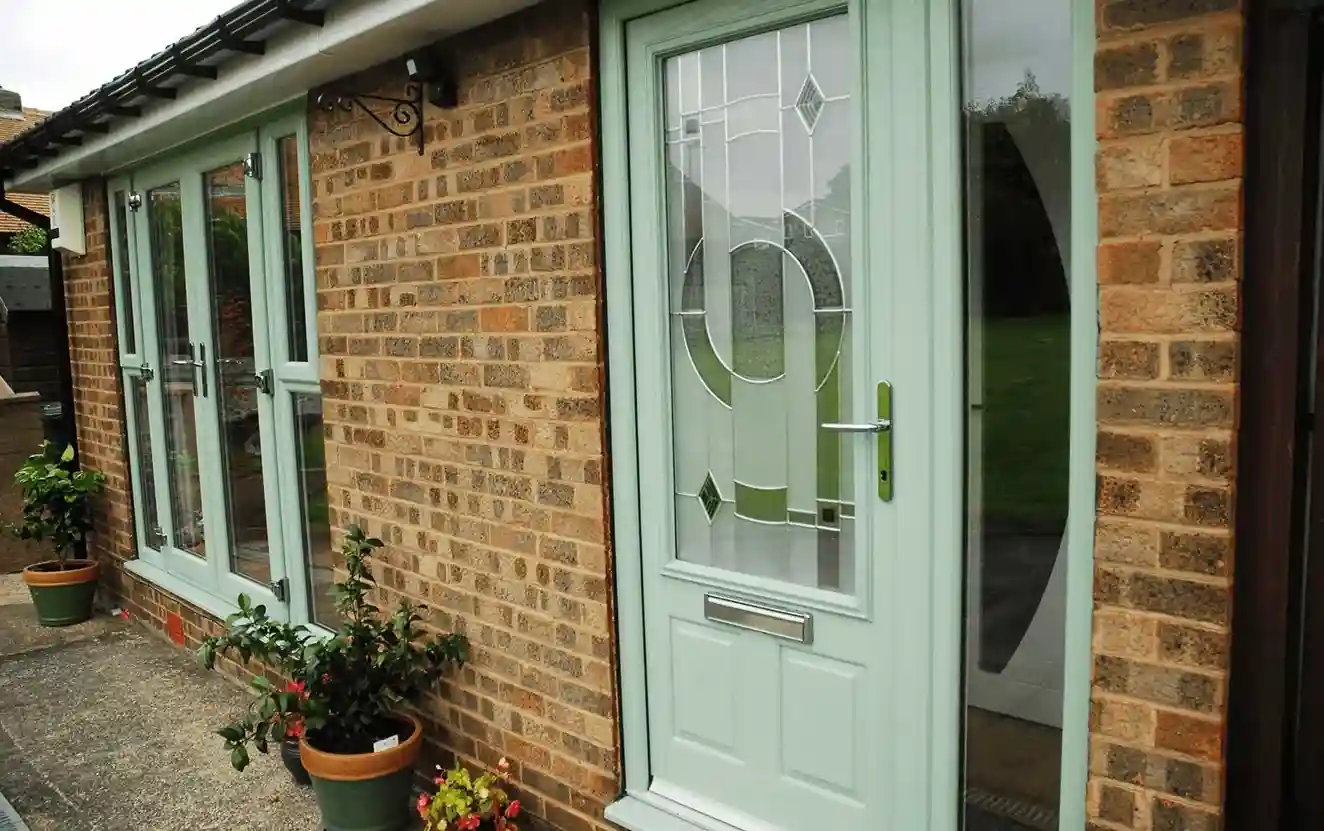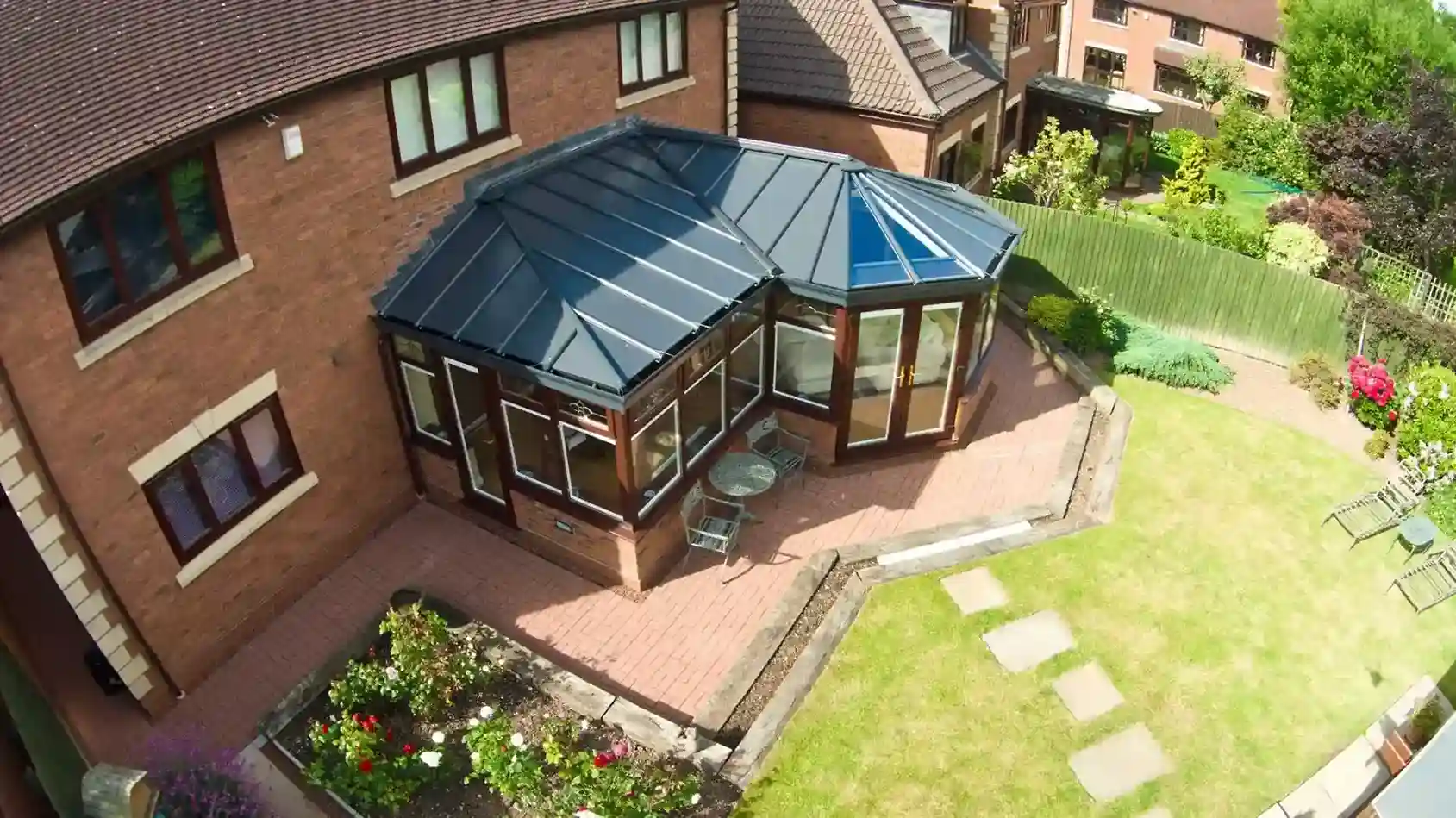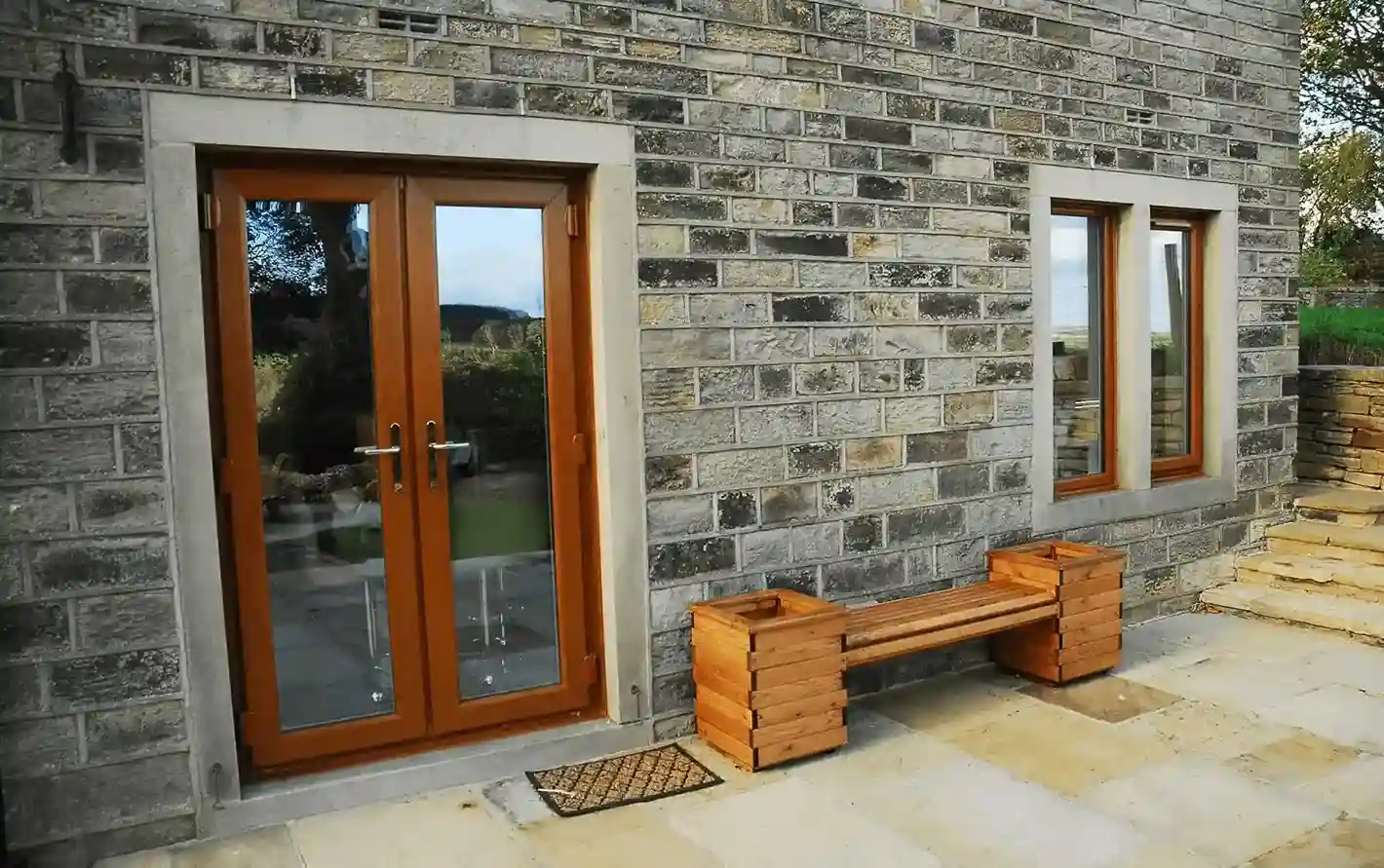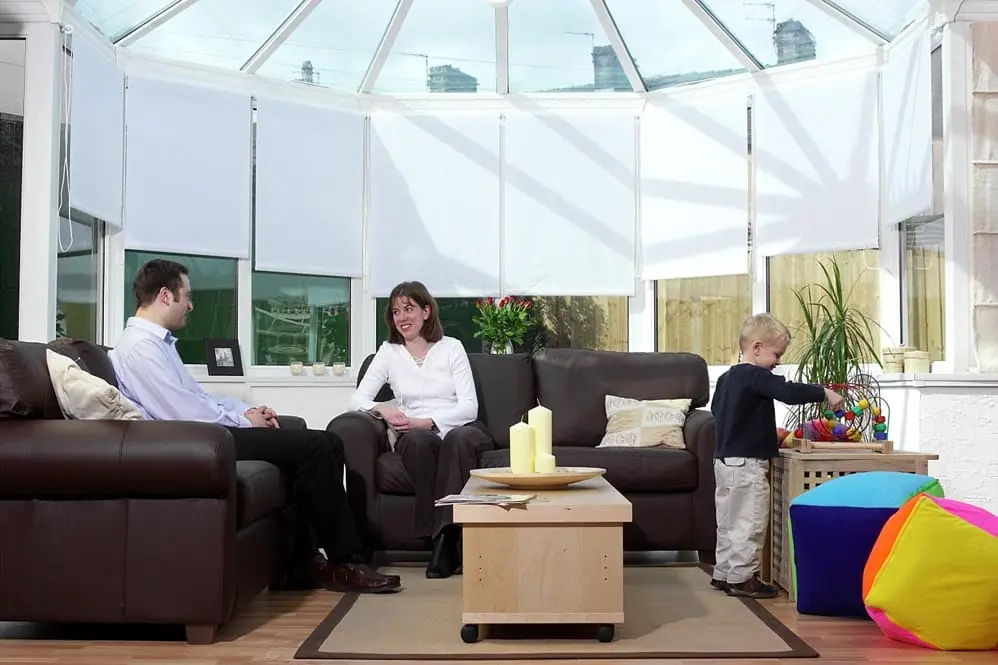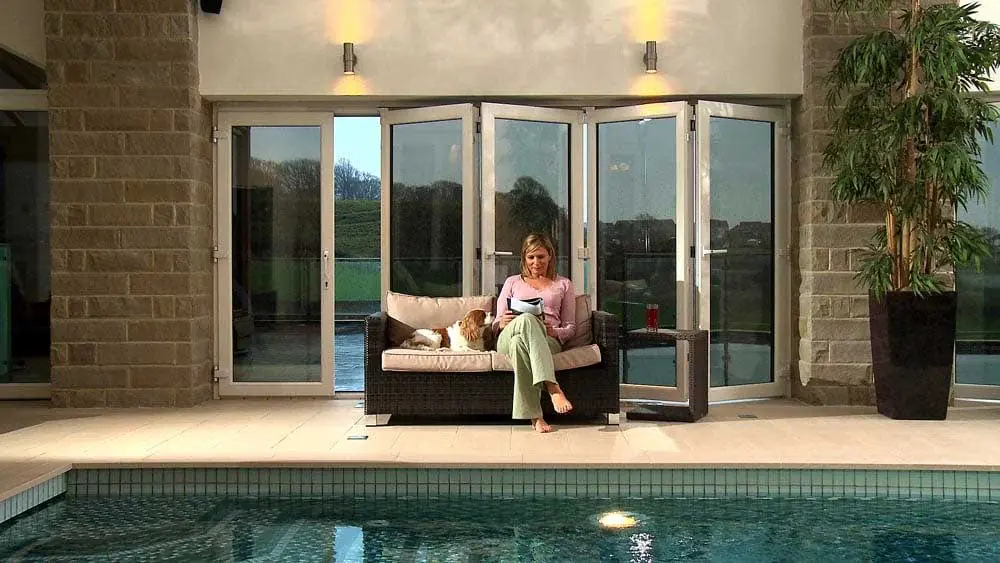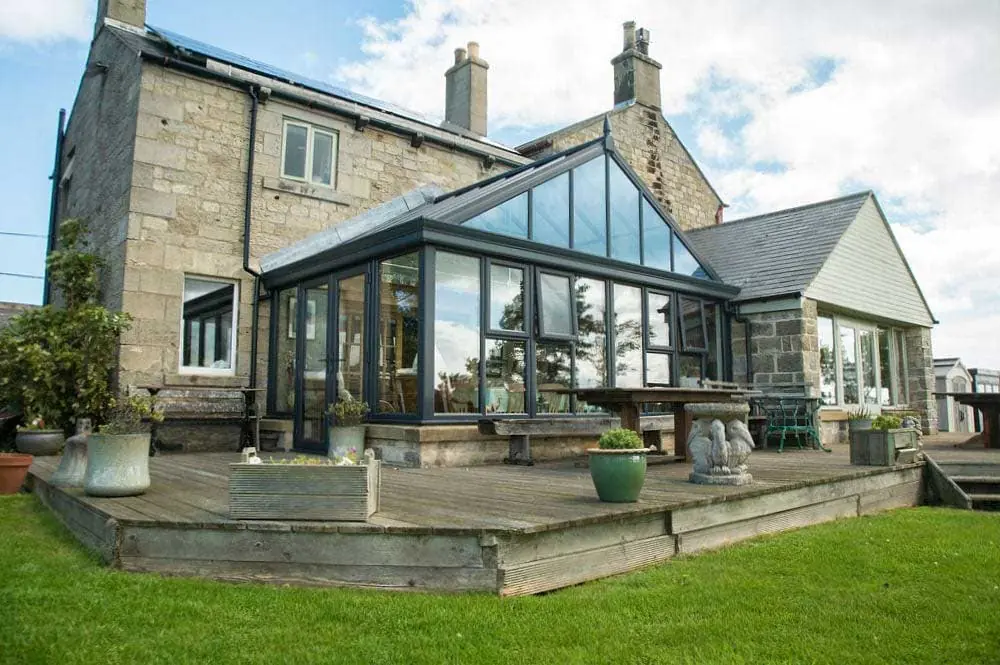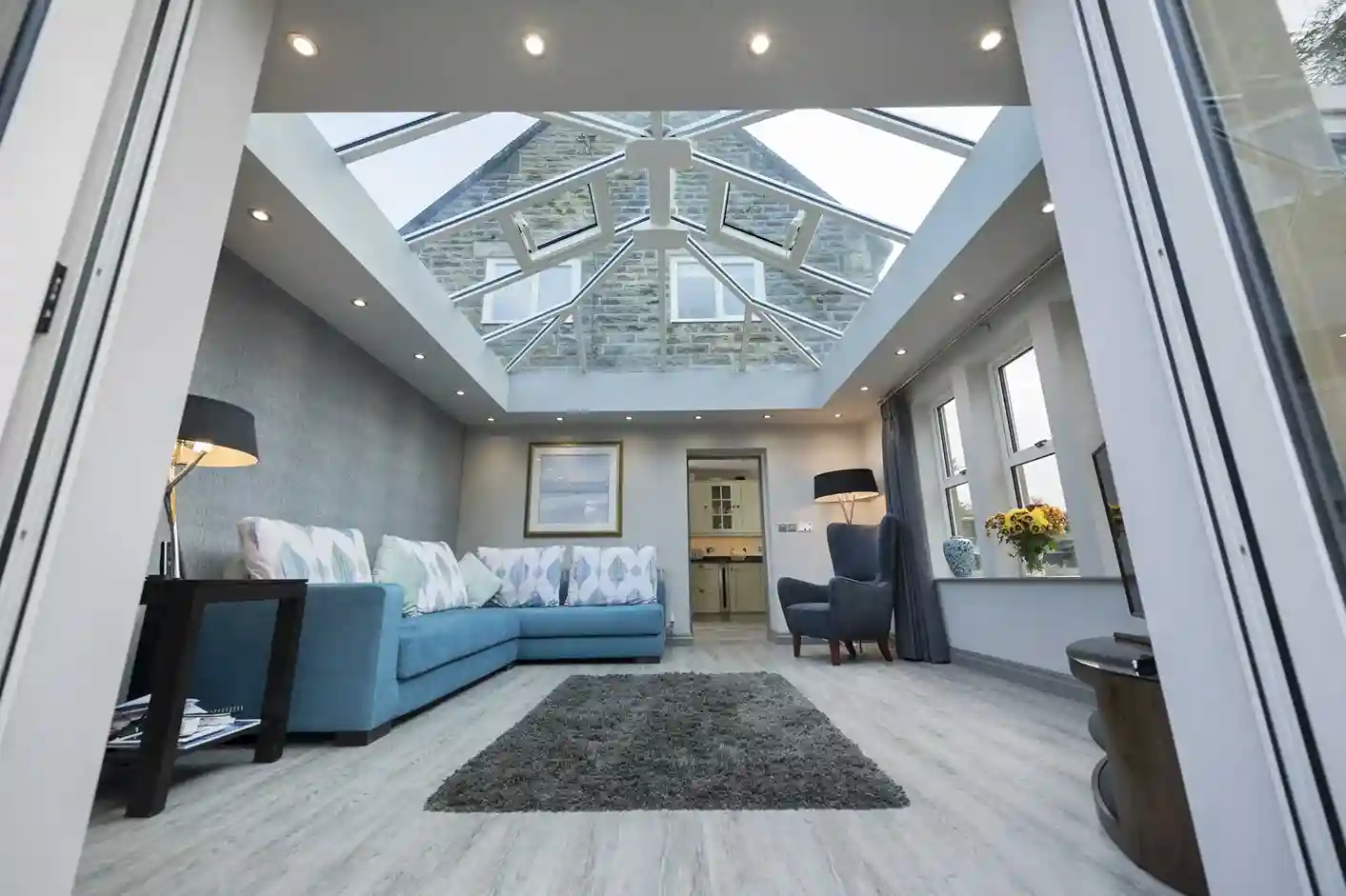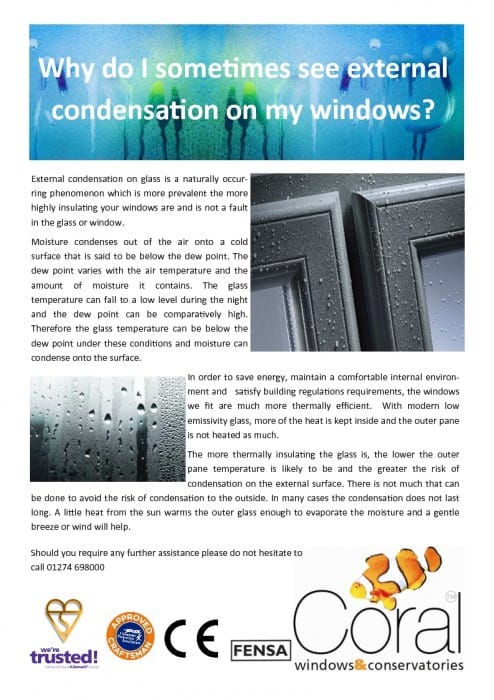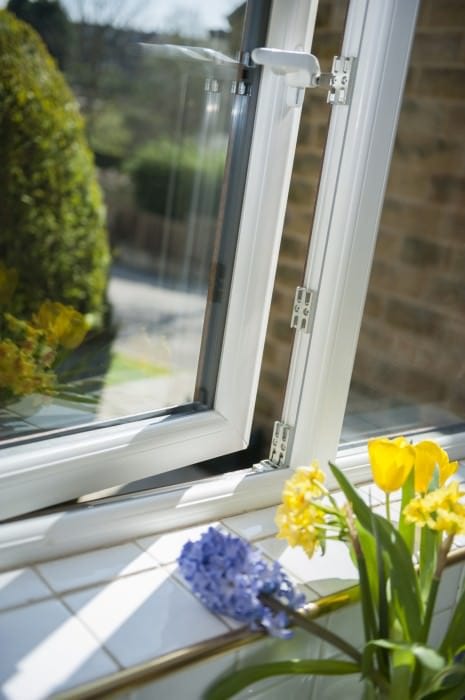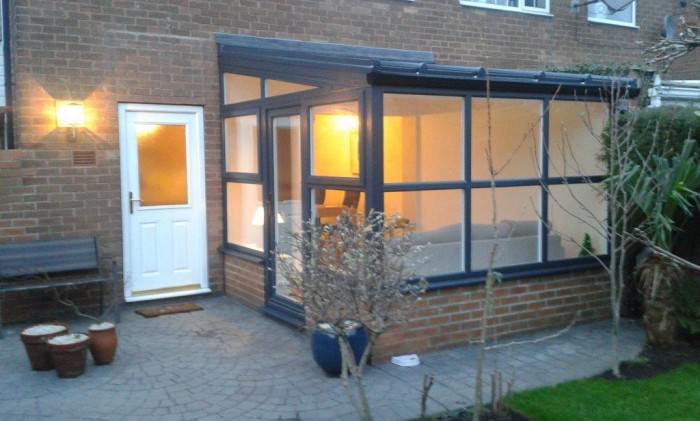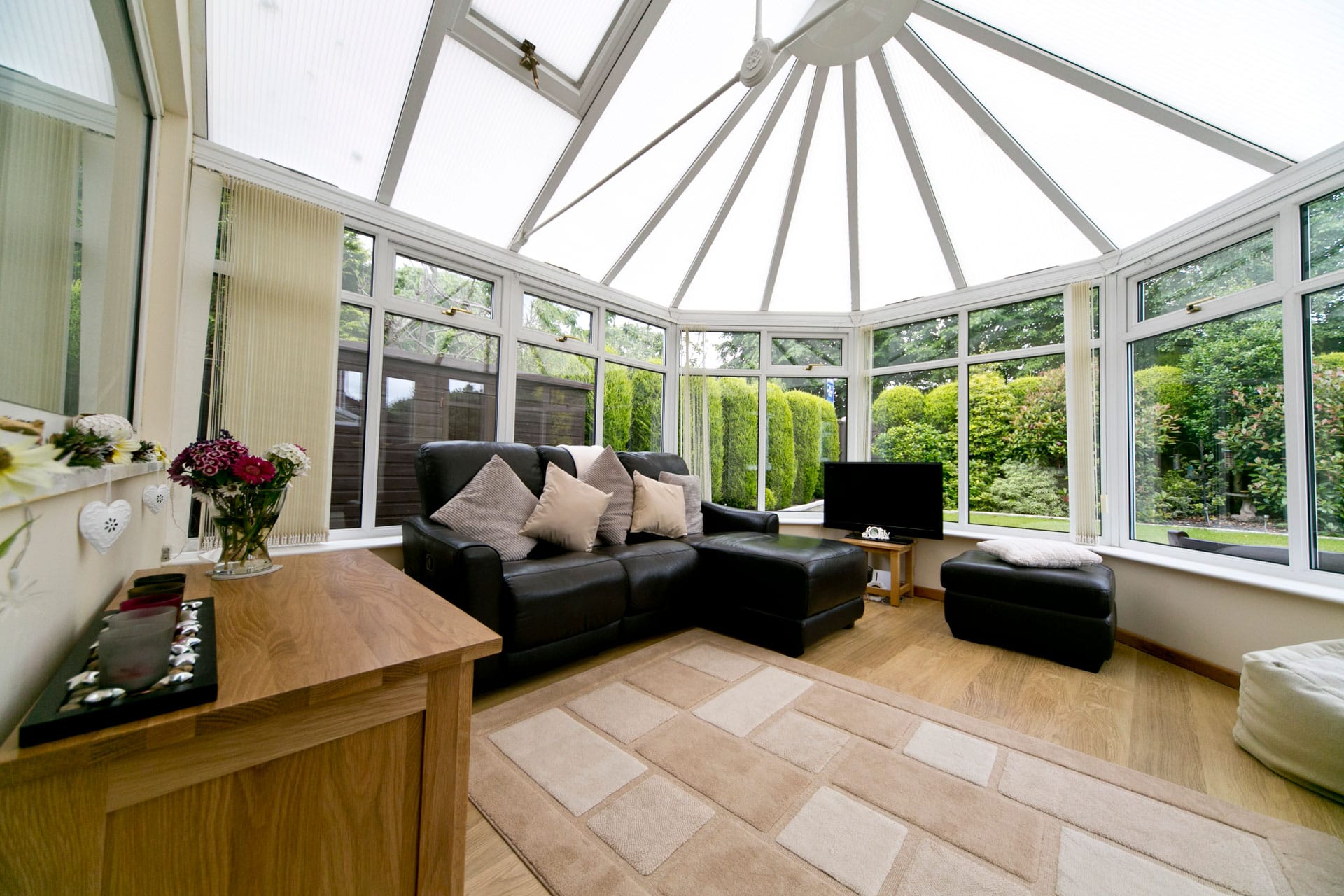Why does condensation form on my windows in cold temperatures?
External condensation on glass is a naturally occurring phenomenon which is more prevalent the more highly insulating your windows are and is not a fault in the glass or window.
Moisture condenses out of the air onto a cold surface that is said to be below the dew point. The dew point varies with the air temperature and the amount of moisture it contains. The glass temperature can fall to a low level during the night and the dew point can be comparatively high. Therefore the glass temperature can be below the dew point under these conditions and moisture can condense onto the surface.
In order to save energy, maintain a comfortable internal environment and satisfy building regulations requirements, the windows we fit are much more thermally efficient. With modern low emissivity glass, more of the heat is kept inside and the outer pane is not heated as much.
The more thermally insulating the glass is, the lower the outer pane temperature is likely to be and the greater the risk of condensation on the external surface. There is not much that can be done to avoid the risk of condensation to the outside. In many cases the condensation does not last long. A little heat from the sun warms the outer glass enough to evaporate the moisture and a gentle breeze or wind will help.
The plus point is the knowledge that your windows are keeping the heat in as they are designed to do, proving that you have a superior insulating glass product.
Categories: Products

